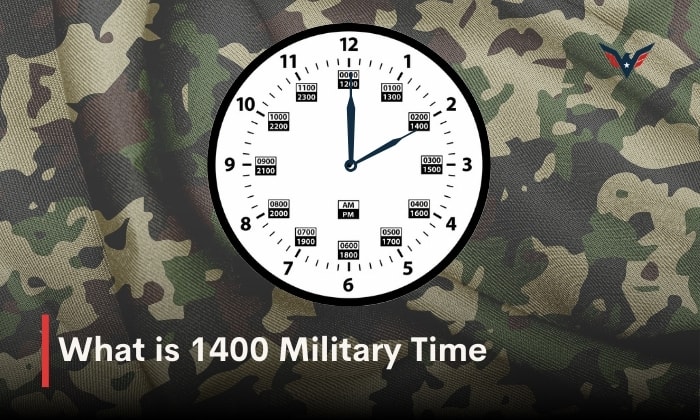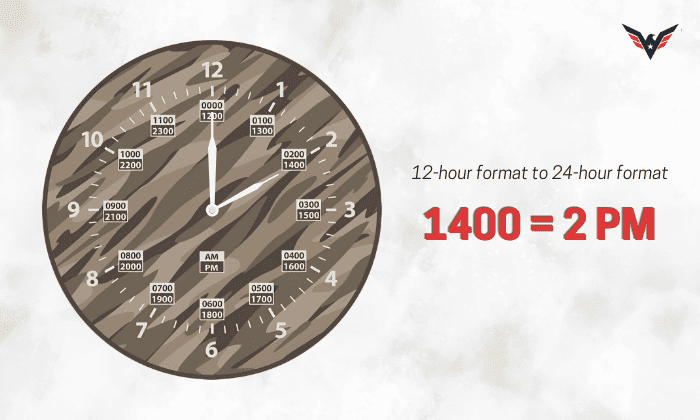Military time is often used in hospitals, law enforcement, and, of course, the military to avoid confusion regarding daytime and nighttime hours.
But if you’re used to the 12-hour clock format in countries like the United States and Australia, it can be hard to understand what is 1400 military time when you see it.
In short, 1400 stands for 2 PM. The steps to convert military time to regular time are simple enough and can be learned in a few minutes. We’ll discuss them below.
Table of Contents
Converting 1400 to Standard Time
You don’t need a converter to understand military time. All it takes is some basic knowledge of this clock format:
- To begin, the first two digits in military time indicate the hour, while the last two digits depict the minutes. Therefore, 14 is the hour, while 00 is the minute.
- If you look at a military time chart, 0000 will mean 12 AM in the morning or midnight, while 0100 to 1100 will mean 1 AM to 11 AM. Midday, or 12 PM, will naturally be 1200.
So, the time up until noon is similar to the 12-hour clock format.
- The difference begins to show itself when you look at military hours past noon. Afternoon and evening hours will start at 1300 (or 1 PM) and last until 2359 (or 11:59 PM).
- For this reason, 1400 will equal 2 PM. You can also subtract twelve hours from the military time if it’s greater than 1300 to make things simple. With this method, 14 – 12 = 2.
And because midday ends at 1200 (and 14 is bigger than 12), 2 here will mean 2 PM.
Moreover, using this military time converter can help you convert time easily.
Here is a military time chart for easy reference.
| 12-hour Time Format | 24-hour or Military Time Format |
| Morning and Noon | |
| 12 AM | 0000 |
| 1 AM | 0100 |
| 2 AM | 0200 |
| …. | …. |
| 11 AM | 1100 |
| 12 PM | 1200 |
| Afternoon and Evening | |
| 1 PM | 1300 |
| 2 PM | 1400 |
| 2:15 PM | 1415 |
| 2:30 PM | 1430 |
| 2:59 PM | 1459 |
| …. | …. |
| 11 PM | 2300 |
| 11:59 PM | 2359 |
Conclusion
What is 1400 military time? It means two in the afternoon. Now that you know how to read military hours and minutes, it should be straightforward to understand them if you see these digits on your schedule.
You might even prefer them to the 12-hour format yourself, as there’s no need to add an “AM” or “PM” abbreviation when writing.

I am Everett Bledsoe, taking on the responsibility of content producer for The Soldiers Project. My purpose in this project is to give honest reviews on the gear utilized and tested over time. Of course, you cannot go wrong when checking out our package of information and guide, too, as they come from reliable sources and years of experience.


